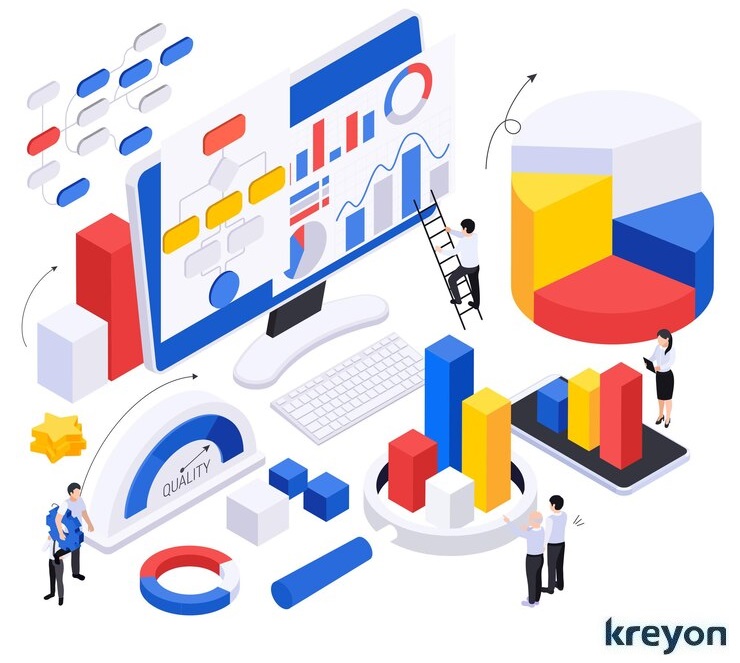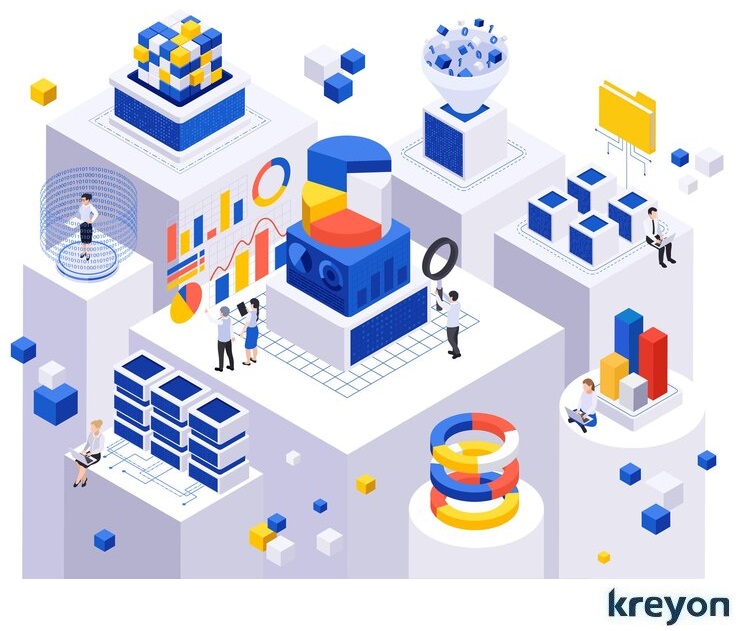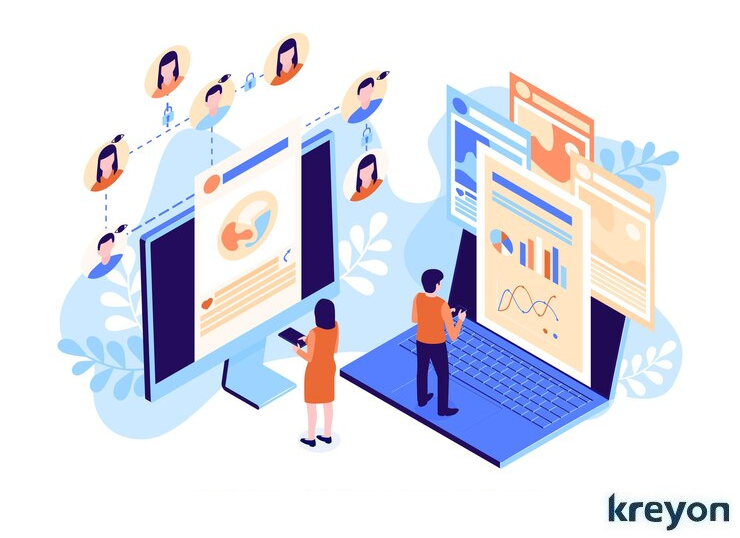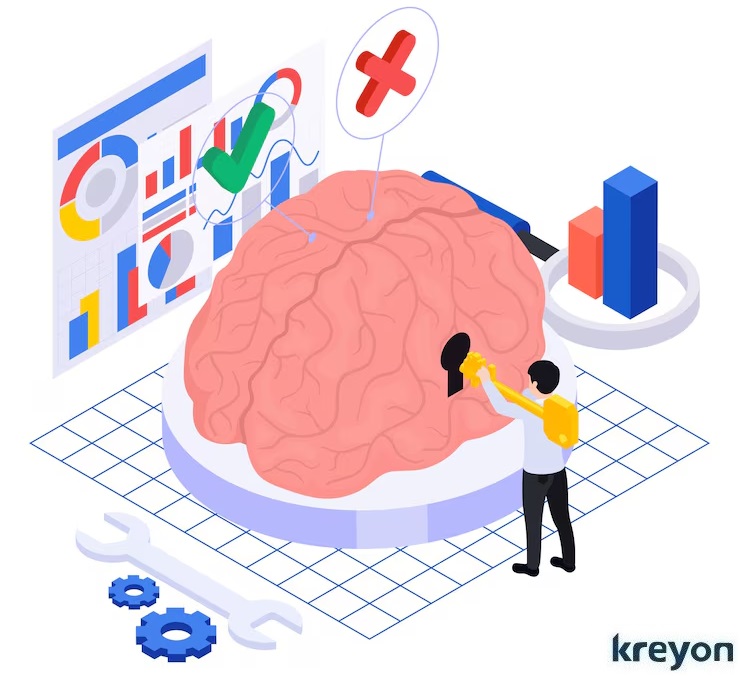Data Driven Enterprise: Essential Data Analytics Techniques

Mastering essential data analytics techniques can significantly impact business performance by providing valuable insights and driving informed decision-making.
Today businesses that are able to leverage data can stay competitive in a data-driven world and unlock new opportunities for success. Businesses of all sizes are recognizing the immense value of data analytics.
By harnessing the power of data, organizations can gain valuable insights into their customers, operations, and market trends. This knowledge can drive informed decision-making, improve efficiency, and ultimately enhance business performance.
This comprehensive article will explore some of the most essential data analytics techniques that businesses can employ to extract meaningful information from their data.
1. Descriptive Analytics
Descriptive analytics is the foundation of data analysis. It involves summarizing and describing data to gain a basic understanding of its characteristics. This technique is essential for identifying patterns, trends, and outliers within the data.
Key techniques
Data Aggregation: Compiling data from different sources to create comprehensive summaries. For example, a retail company might aggregate sales data across different regions to identify top-performing stores.
Data Visualization: Creating charts, graphs, and other visual representations to make data more understandable and accessible. Tools like Tableau, Power BI & customized dashboards allow businesses to
create interactive visualizations that make data easier to interpret.
Frequency analysis: Determining the frequency of occurrence of different values within a dataset. For e.g. user behaviour can be tracked in terms of views, likes, time etc. This data can be used to rank content for users.
Descriptive statistics: Calculating measures such as mean, median, mode, standard deviation, and variance to summarize data distribution. This can help companies plan in advance for e.g. festive discounts on ecommerce.
Descriptive analytics helps businesses understand historical performance, identify trends, and make informed decisions based on past data. It provides a solid foundation for forecasting and strategic planning.
Take for e.g. a retail company uses descriptive analytics to analyze sales data and identify the best-selling products, popular customer segments, and seasonal trends.
This information helps the company optimize inventory management, target marketing efforts, and improve customer satisfaction. It reduces inventory carrying costs and improves bottom line for their business.
2. Diagnostic Analytics

Diagnostic analytics delves deeper into the “why” behind the patterns and trends identified through descriptive analytics. It involves investigating the underlying causes of specific phenomena and identifying potential root causes.
Key techniques
Root Cause Analysis: Identifying the underlying causes of problems or anomalies. For instance, if a company experiences a sudden drop in sales, root cause analysis might reveal issues like a flawed marketing strategy or supply chain disruptions.
Correlation Analysis: Examining relationships between different variables to understand how they influence each other. This technique can reveal insights such as how customer satisfaction impacts repeat purchases.
Hypothesis testing: Evaluating whether observed data is consistent with a particular hypothesis.
A manufacturing company uses diagnostic analytics to analyze production data and identify the root causes of quality defects.
By understanding the factors that contribute to defects, the company can implement corrective measures to improve product quality, reduce costs & product recalls.
By analyzing return reasons and customer feedback, companies can pinpoint issues with products or services and implement corrective actions to improve customer satisfaction.
3. Predictive Analytics
Predictive analytics leverages historical data and statistical models to forecast future outcomes. It is used to identify potential risks and opportunities and make informed decisions about future actions.
Key techniques
Regression Analysis: Modeling the relationship between variables to predict future outcomes. For example, a company might use regression analysis to forecast sales based on historical data and market trends.
Time Series Analysis: Analyzing data points collected or recorded at specific time intervals to identify patterns and make forecasts. Retailers often use time series analysis to predict demand for products during different seasons.
Machine learning: Building models that can learn from data and make predictions without being explicitly programmed. By analyzing historical sales data & external factors like weather patterns, Walmart can forecast product demand & adjust inventory levels accordingly.
Data mining: Discovering patterns and relationships within large datasets. It involves using various statistical & computational algorithms to extract valuable information that can be used to make informed decisions.
The accuracy of predictive analytics depends on the quality of the data and the algorithms used. While predictive models can provide valuable forecasts, they are not foolproof and should be used in conjunction with other decision-making tools.
Financial institutions use predictive analytics to assess credit risk and determine the likelihood of loan defaults. This information helps the institution make more informed lending decisions and manage risk more effectively.
4. Prescriptive Analytics

Prescriptive analytics goes beyond prediction and provides recommendations for optimal actions. It combines data analytics, business rules, and optimization techniques to suggest the best course of action based on specific goals and constraints.
Key techniques
Optimization modeling: Formulating and solving mathematical models to find optimal solutions. Using mathematical models to find the best solution to a problem. Take for instance, logistics companies use optimization to determine the most efficient delivery routes.
Simulation: Creating models of complex systems to test different scenarios and evaluate potential outcomes. Businesses can use simulation to evaluate the impact of various strategies and make data-driven decisions.
Decision support systems: Providing tools and information to support decision-making processes. They combine data analysis techniques with a user-friendly interface to support decision-making processes.
Prescriptive analytics helps businesses make informed decisions by providing actionable recommendations. It enhances decision-making by evaluating various scenarios and suggesting the best course of action.
A transportation company uses prescriptive analytics to optimize route planning and vehicle scheduling. By considering factors such as traffic conditions, customer demand, and driver availability, the company develops efficient and cost-effective transportation plans.
By analyzing factors like demand, competition, and operational constraints, transport companies can recommend pricing strategies and scheduling adjustments that maximize revenue and efficiency.
5. Statistics in Data Analytics
Statistics play a crucial role in data analytics by providing the tools and methods needed to analyze data and draw meaningful conclusions. Here are two important statistical concepts that are widely used in data analytics:
Techniques in Real-Time Analytics
Probability: Probability measures the likelihood of an event occurring. It is used to quantify uncertainty and assess the risk associated with different outcomes.
Hypothesis testing: Hypothesis testing is a statistical method used to evaluate whether observed data is consistent with a particular hypothesis.
It involves setting up a null hypothesis and an alternative hypothesis and then using statistical tests to determine whether the data provides sufficient evidence to reject the null hypothesis.
Modeling the relationship between variables. For example, real estate portals use predicting house prices based on factors like size, location, and number of bedrooms etc.
6. Real-Time Analytics: Making Immediate Decisions

Real-time analytics involves analyzing data as it is generated to make immediate decisions. It is crucial for businesses that need to respond quickly to changing conditions.
Techniques in Real-Time Analytics
Stream Processing: Analyzing data in real time as it flows into the system. This technique is used for applications like fraud detection and network monitoring.
Event-Driven Analytics: Responding to specific events or triggers in real time. For example, online retailers use event-driven analytics to offer personalized promotions based on customer behavior.
Ecommerce companies uses real-time analytics to create discounts for users and adjust pricing dynamically. By analyzing data on user demand, availability of items, and market conditions. Companies can make immediate adjustments to price to improve their sales growth.
7. Customer Analytics: Understanding Customer Behavior
Customer analytics focuses on analyzing customer data to understand behavior, preferences, and trends. It helps businesses tailor their products, services, and marketing strategies to meet customer needs.
Techniques in Customer Analytics
Segmentation: Dividing customers into groups based on shared characteristics. This allows businesses to target specific segments with personalized marketing efforts.
Customer Lifetime Value (CLV): Calculating the total value a customer brings to a business over their lifetime. CLV helps businesses prioritize high-value customers and allocate resources effectively.
Retailers use customer analytics to enhance their loyalty program and personalize marketing. By analyzing customer purchase history and preferences, retailers can offer targeted promotions and recommendations that drive customer engagement and loyalty.
Implementing real-time analytics requires investing in data processing technologies and infrastructure that can handle high-velocity data streams. Tools like Apache Kafka and AWS Kinesis are popular for real-time data processing.
Conclusion
Data analytics has become an indispensable tool for businesses seeking to gain a competitive edge in today’s data-driven world.
By effectively utilizing techniques such as descriptive, diagnostic, predictive, and prescriptive analytics, organizations can extract valuable insights from their data and make more informed decisions.
Kreyon Systems offers comprehensive data analytics solutions tailored to your organisational needs. If you have any queries, please contact us.
